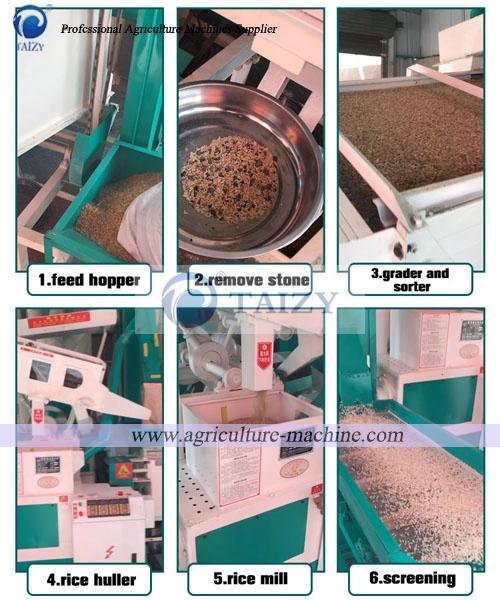Paddy cleaning – essential for removing unwanted foreign matter, rice cleaning is important to ensure proper operation of the rice mill; the coarse rice passes through a series of sieves and provides a closed-circuit suction system to remove dust by positive suction Light impurities.
Undesirable materials pass through a slag remover/gravity separator than coarse meters (but similar in size). This machine works according to the principle of specific gravity. Stones and other heavier impurities are heavier and remain on the surface of the screen, while rough rice is lighter and flows to a positive air gradient created by an external source.
The rice husking-streamlined rice stream is directed into a pair of rubber rolls that rotate in opposite directions at different speeds. The horizontal inward pressure on the corrugating roller is pneumatically applied. Due to the difference in rotating seeds, shear forces are generated on the surface of the hull (both sides of the rubber are rubber rollers), destroying the surface/hull. The lower specific gravity shell is then separated from the brown rice by a closed circuit suction system.
This process causes breakage of brown rice. Although proper horizontal inward pressure is an important factor in crushing or rice, the efficiency of shelling is equally important and should be maintained between 75% and 85%.


The rice-separated rice surface is smoother than the rough rice surface. This difference in surface texture is used to separate brown rice from brown rice by a rice separator. A smooth textured grain surface with a high width is removed along with precise sized red particles.
Whitening Rice – Rubbing with a rough surface made of sand with a specific grid size. The rough corundum removes the brown bran layer. The radial speed of the stone wheel, the grid size of the stone, the gap between the stone surface and the other stencils, and the external pressure of the outlet chamber of the whitening machine determine the degree of whiteness. If pneumatically transported to a separate room for further processing/storage, the bran layer is removed from the surface.
Rice polished – the surface of the white rice is still rough and polished by a humidified rice polishing machine. This process involves rubbing the rice noodles with another rice surface with a mysterious air between the two faces as a lubricant. Usually a modified version of this process is used to create an ultra-fine silk-like finish on the rice surface.
Rice Grading – The rice is removed from the entire rice by a cylindrical indentation screen that rotates at a specific speed. The broken/small particles embedded in the indentations of the rotating cylinder are lifted by centrifugal force, and gravity drops the particles into the grooves. Adjusting the rotation speed and angle of the groove can change the average length of the grain.
The beige sorting-beige sorter removes the variegated rice grains from the colored grain. A photosensor/CCD (Charge Coupled Device) sensor generates a voltage signal when observing the color-changing particles, and then removes it by air jet generated by the solenoid valve.
